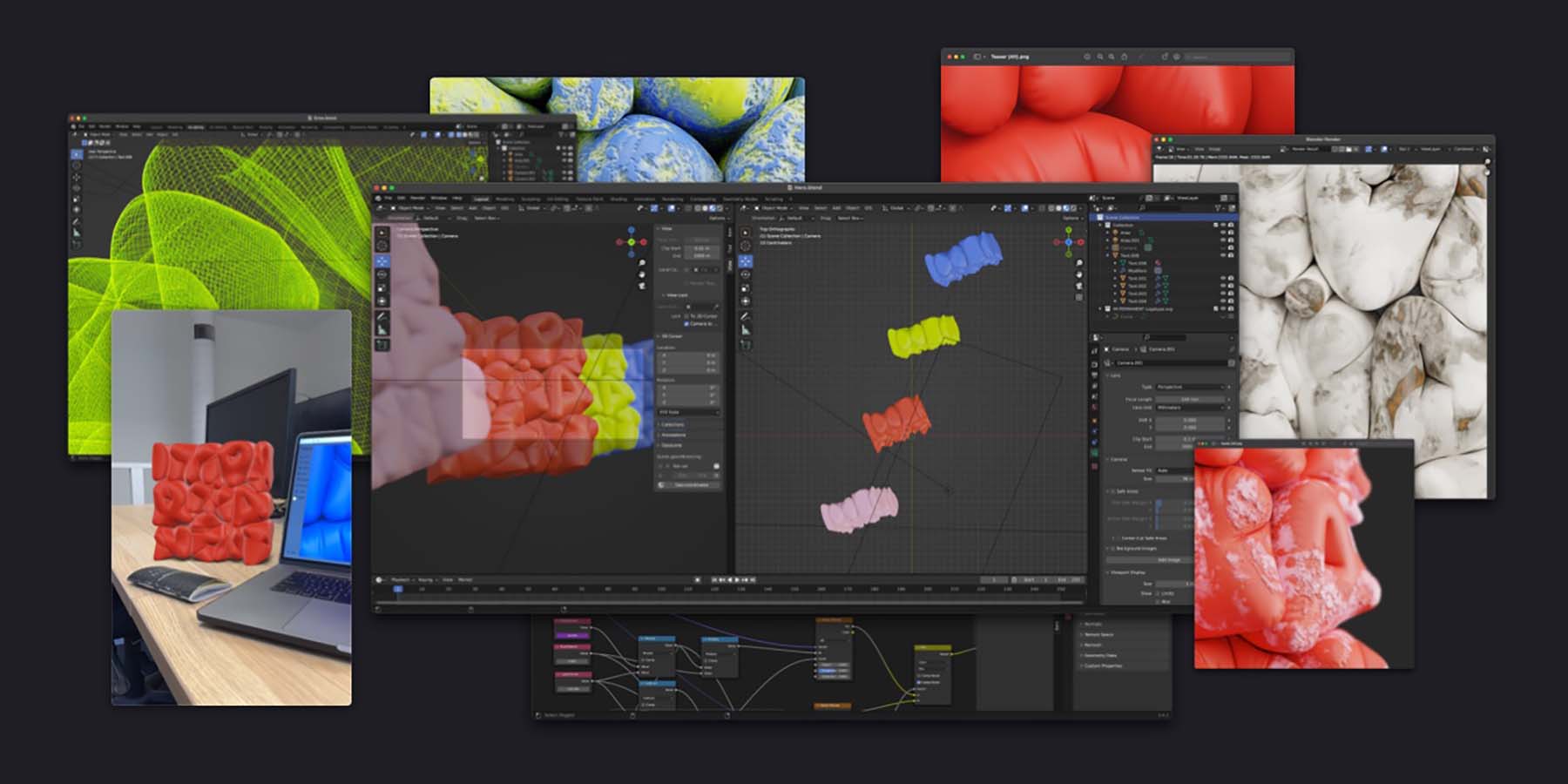The design process was highly collaborative, with Ellis Jones and RMIT Industrial Design working closely together to realise this project.
The name spoke to the duality of both material and exhibition. A ‘pop-up’ during Melbourne Design Week, with a number of exhibits grown for – and with a life cycle corresponding to – the dates of the exhibition.
The process for creating the visual identity for IM-PERMANENT began with asking the question, ‘how might we grow a logo?’ The team developed a 3D typeform, with the letters from IM-PERMANENT manually growing through a 3D simulation. The colour palette was deliberately bright and artificial, representing colours not found in nature, and therefore juxtaposing the earthly, raw aesthetic of mycelium.
The process of designing the works for IM-PERMANENT involved briefing artists, academics, industrial designers and mycelium practitioners on the vision for the exhibition. Exhibitors worked both independently and collaboratively, with some pieces developed with the input of up to six practitioners. Working with mycelium is a process that often takes place in a lab and is not easily conveyed in a gallery space. Ellis Jones worked with the RMIT exhibition team to create a wall of process images that conveyed the behind-the-scenes techniques required to develop mycelium artefacts. The RMIT team also created an educational video that featured exhibitors explaining their processes, outcomes and why mycelium could be a valuable ‘new’ material in creating a circular economy.
Due to the slow, temperamental nature of growing mycelium, a long lead time was required, with flexibility needed around grows.
The project surpassed our initial expectations of developing a single creative activation with one mycelium designer, and instead, resulted in a 9-day exhibition, premiering at the Abbotsford Convent, a key program hub of the 2023 Melbourne Design Week, featuring more than 20 mycelium practitioners.









